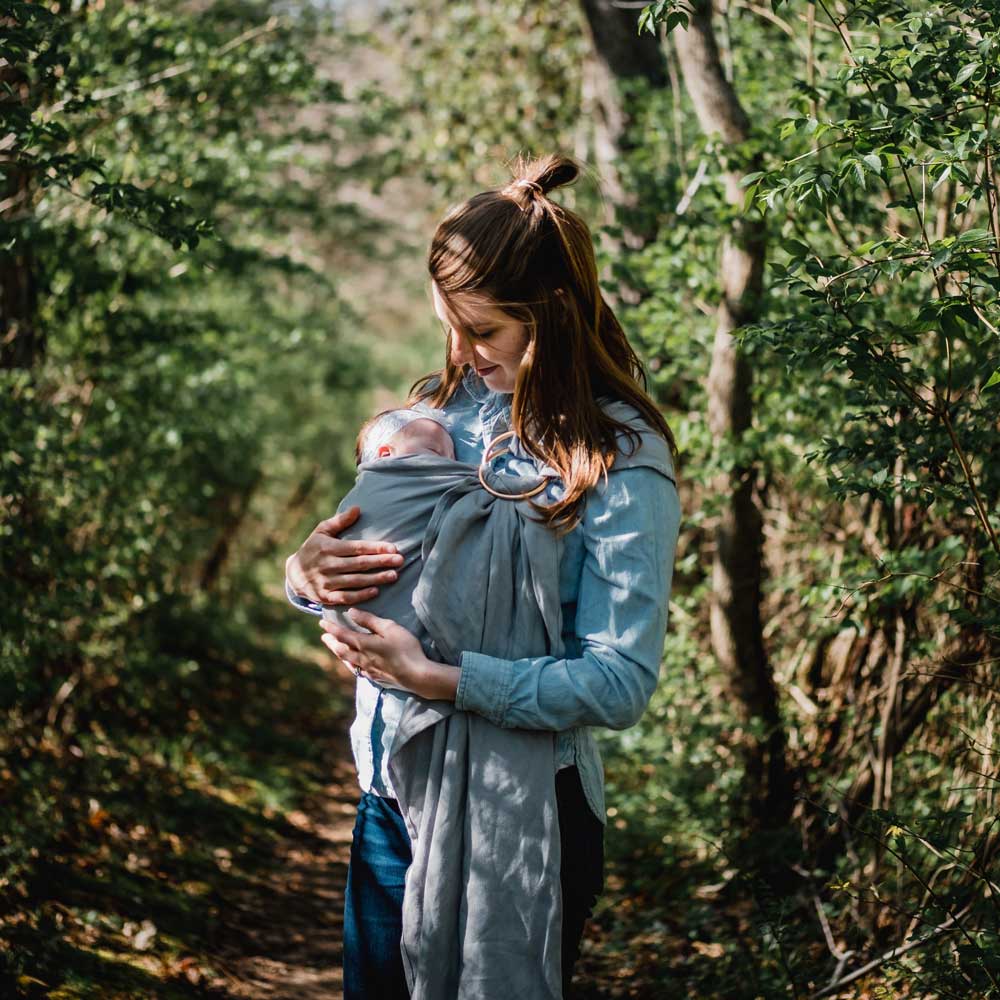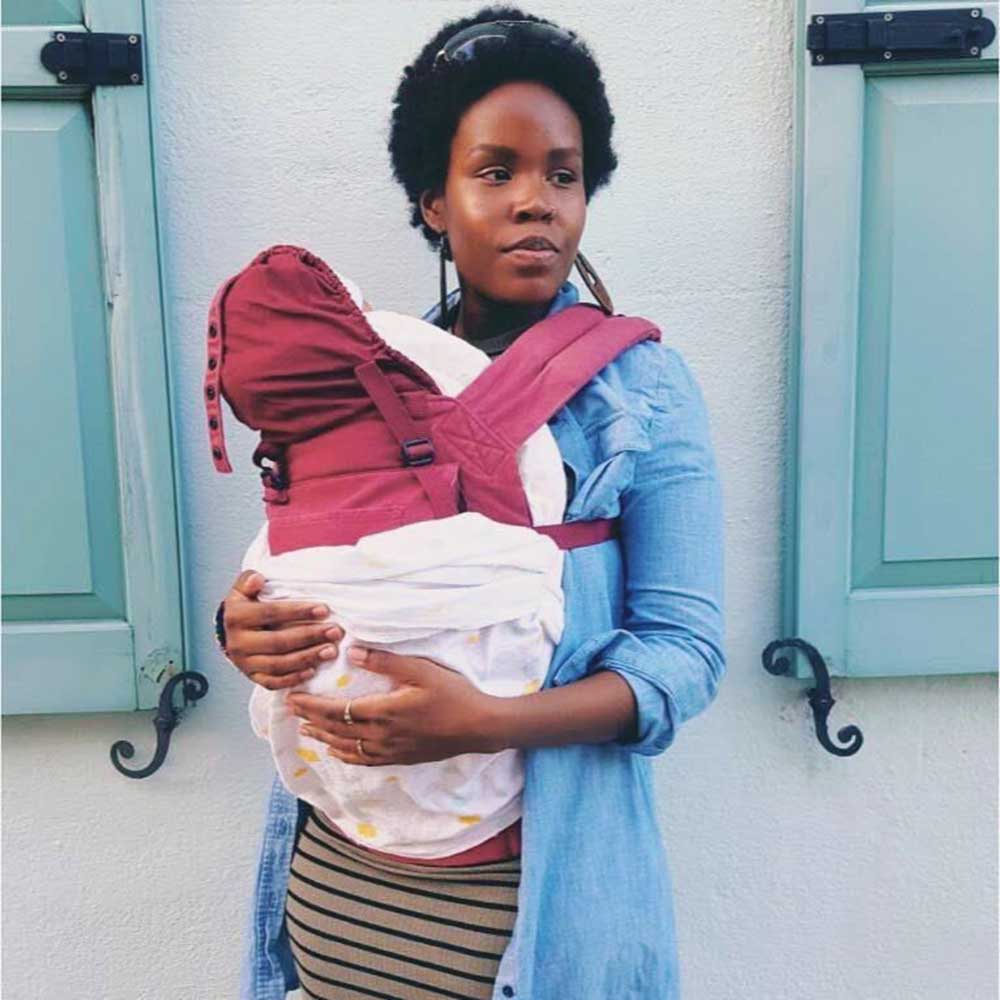Babywearing and which Baby Carrier Should I Choose
Babywearing is nothing new. It’s how parents around the world have cared for their babies since time immemorial. Modern parents are no different. We, like our ancestors, look to babywearing to make our lives with our babies easier - and cuddlier!
There are many interrelated reasons that parents turn to babywearing. It all boils down to biology - babies’ bodies expect to be held, and parents’ bodies expect to be holding. Studies of skin-to-skin and kangaroo care show us that, among other things, when our babies are on our bodies:
- Their temperatures are more steady.
- Their breathing is more regulated.
- They are calmer.
As for parents, when our babies are on our bodies…
- Those of us who make milk improve our milk production.
- We make hormones that allow us to bond with our babies.
- We build confidence as parents.

The truth is, we don’t really need studies to understand that many babies prefer to be held a lot of the time, and that parents like to be close to their babies. The problem is, of course, that as much as we may love holding our babies, we would also like to be able use our hands! That’s where babywearing comes in - it allows us to simultaneously keep our babies on our bodies and have our hands free. Babywearing also releases us from the stroller when we are out and about - no more worrying about stairs, doors, narrow entrances and hallways, small restaurants and shops, crowded public transportation, or what to do if the baby suddenly needs to be picked up.
Having established the desirability of babywearing, though, the modern parent is faced with a quandary: Which baby carrier should I use? This is a very modern problem. There was a time when a parent would simply learn how to use the baby carriers routinely used in their native culture, and that would be the end of it. Now, however, the market proliferates endlessly, giving us YET ANOTHER parenting choice that we must make.
The first thing to do when choosing baby carriers is...take a deep breath and RELAX! Consumer guides may suggest otherwise, but in reality there’s not necessarily a single, epic, very-best carrier that will solve all of your problems and that you must hunt down and obtain in order to achieve Gold Star Top Parent status. Lots of different people make different carriers work for them, and you can, too! As with any other baby products (or any products, really), there is an element of chance. Sometimes, something that seems like a really good choice simply doesn’t work out the way in that you had hoped - or it works well for a while and then doesn’t work so well, or vice versa. This is to be expected. Understanding that will release you from the pressure of having to make that ONE PERFECT CHOICE and to give you an openness to trying things out and learning as you go.
Safety really is the top priority in a baby carrier. A carrier should be able to hold your baby high and tight against your body, with their head resting upright on your upper chest. It should be able to contain your baby in this way without covering the front of their face, so that you can always kiss the top of your baby’s head and you can see their nose and mouth. Avoid carriers that cause your baby’s face to be covered and avoid placing the baby in a position where their chin is tucked on their chest with their head tipped forward.

You also want the carrier to be safe for you - ergonomically correct and unlikely to cause much discomfort to your body. This is achieved, again, by having the baby high and tight against your body. If the baby is dangling from your body, that puts a strain on you as well as on them. (Think about how you might tighten your backpack straps to bring a heavy load fully onto your back instead of having it drag painfully at your shoulders.)
So, try the carrier on with a doll and/or examine the pictures on the packaging/website. Does the baby seem high and tight against your body and/or the models’ bodies, rather than dangling away? Is the front of the baby’s face uncovered? Can you easily kiss the top of your baby’s head? If so, that probably means that the carrier, when used correctly, is able to keep both the baby’s body and yours relatively safe.
That said, many major brands of carriers on the market are able to meet these baseline criteria. So...how do you choose? It may be helpful for you to understand that there are a few major categories of carriers available:
- Soft structured carrier. This is a carrier with buckles and padding.
- Ring sling. This is a one-shouldered carrier consisting of a piece of fabric sewn to two aluminum rings at one end, with the other end passing through them as in a D-ring belt.
- Stretchy wrap. This is a long piece of jersey knit fabric.
- Woven wrap. This is a long piece of woven (non-stretchy) fabric.
- Asian-style carrier. This category includes meh dai (Chinese), onbuhimo (Japanese), and podaegi (Korean). Broadly speaking, these are all carriers with square or rectangular bodies with straps that fasten over the wearer’s shoulders.
- Kangaroo care carrier. This is designed to allow for hands-free skin-to-skin kangaroo care. Many kangaroo care carriers are modified shirts - a wraparound shirt, or a shirt with a pouch. Most are not meant for walking around outside, but rather for sitting with your baby on your chest.
- Hybrid/none-of-the above carriers. The market is endlessly inventive! There are many carriers out there that don’t fit into any of these categories, or fit into more than one.
The boober team has a few specific carriers that we really love. Ideally, you will find a way to try a few carriers on with the assistance of an experienced babywearing educator. (The difference between doing this, and just trying them on by yourself at a big box store, is huge!) Put your search engine and your social network to use - there may be classes, stores, and educators in your area that you didn’t even know about!
If you can’t try on carriers with an educator, look carefully at product photographs and descriptions. First check whether the carrier appears to meet the safety criteria above. Then, activate your self-knowledge and common sense. For example...
- Are you a small-framed person? The more bulky, heavily-padded carriers are not likely fit you properly.
- Are you on the larger end of the size spectrum? Check descriptions to ensure that straps/adjustments will be comfortable for your body.
- How flexible/mobile are your arms and shoulders? Many buckle carriers have a fastening that requires you to reach over and behind your neck/shoulders - does that work for you? Do you have any other physical restrictions that might narrow your choices?
- Do you tend to love gear/equipment with lots of technical details, features, and adjustments - or does that overwhelm you? Such things are not helpful unless you can master them.
- Overall, aesthetically/practically speaking, do you tend to go for more technical/gear-ish stuff, or more streamlined/minimalist stuff, or more soft/textile-ish stuff?
Honest self-inquiry like this will go a long way in helping you to narrow your choices.
If, after purchasing a carrier or two and trying them out with your baby, you find that they’re not working for you, get help! Attend a local babywearing clinic, book a private consultation with a babywearing educator, and/or ask around in online or in-person parents’ groups! There’s no reason to believe that you won’t be able to work it all out eventually.
Babywearing is an amazing tool that can make your life with your baby easier and more fun. As with almost any other parenting skill, it may seem daunting at first - but, as with other parenting skills, a little bit of courage, a little bit of common sense, a little bit of luck, and a little bit of support are enough to get you headed in the right direction. So take a deep breath, dive in, and enjoy!
Koyuki Smith works with birthing parents and birth professionals in NYC and around the country. She teaches group and private babywearing and childbirth education classes and trains childbirth educators and doulas with Birthing From Within. In addition to all things birth, Koyuki loves kung fu, 19th-century novels, and outfits. She lives in Harlem with her husband, two children, a weird little Maltipoo, and a lot of books and records. Find out more about her work at www.BirthingFromWithinNewYork.com.